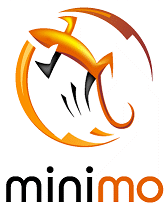
Minimo was a project to create a version of the Mozilla web browser for small devices like personal digital assistants and mobile phones.
Mobile app development is the act or process by which a mobile app is developed for one or more mobile devices, which can include personal digital assistants (PDA), enterprise digital assistants (EDA), or mobile phones. Such software applications are specifically designed to run on mobile devices, taking numerous hardware constraints into consideration. Common constraints include CPU architecture and speeds, available memory (RAM), limited data storage capacities, and considerable variation in displays and input methods. These applications can be pre-installed on phones during manufacturing or delivered as web applications, using server-side or client-side processing to provide an "application-like" experience within a web browser.
Kiosk software is the system and user interface software designed for an interactive kiosk or Internet kiosk enclosing the system in a way that prevents user interaction and activities on the device outside the scope of execution of the software. This way, the system replaces the look and feel of the system it runs over, allowing for customization and limited offering of ad-hoc services. Kiosk software locks down the application in order to protect the kiosk from users which is specially relevant under, but not only limited to, scenarios where the device is publicly accessed such libraries, vending machines or public transport. Kiosk software may offer remote monitoring to manage multiple kiosks from another location. An Email or text alert may be automatically sent from the kiosk for daily activity reports or generated in response to problems detected by the software. Other features allow for remote updates of the kiosk's content and the ability to upload data such as kiosk usage statistics. Kiosk software is used to manage a touchscreen, allowing users to touch the monitor screen to make selections. A virtual keyboard eliminates the need for a computer keyboard.
Cover Flow is an animated, three-dimensional graphical user interface element that was integrated within the Macintosh Finder and other Apple Inc. products for visually flipping through snapshots of documents, website bookmarks, album artwork, or photographs.
A mobile operating system is an operating system for smartphones, tablets, smartwatches, smartglasses, or other non-laptop personal mobile computing devices. While computers such as typical/mobile laptops are "mobile", the operating systems used on them are generally not considered mobile ones, as they were originally designed for desktop computers that historically did not have or need specific mobile features. This line distinguishing mobile and other forms has become blurred in recent years, due to the fact that newer devices have become smaller and more mobile unlike hardware of the past. Key notabilities blurring this line are the introduction of tablet computers and light-weight laptops and the hybridization of the two in 2-in-1 PCs.
Samsung SCH-U940 is a Verizon Wireless touch-screen phone made by Samsung. The Glyde was based on the popular European Croix, but was later adapted for the United States. It was released in late May 2008 in Verizon stores. As of August 2009, the phone is no longer listed for sale on Verizon's website. The phone features touch screen navigation, a 2.0-megapixel camera/camcorder with flash, customizable shortcut menus, and a full HTML browser. The phone has been replaced by a newer version, the Samsung Rogue.
The Samsung Behold II is a touch-screen, 3G- compatible smartphone with a 5.0-megapixel camera. The Samsung Behold II is powered by the Android OS, making it the fourth Android powered phone by T-Mobile USA. Other Android powered phones by T-Mobile are the G1, myTouch 3G, and the Motorola CLIQ. It was released on November 18, 2009. On May 27, 2010, Samsung announced that Android 1.6 "Donut" would be the final firmware release for the device.
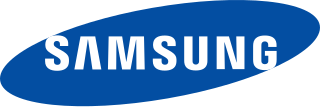
The Samsung Wave is a smartphone developed and produced by Samsung Electronics. It is the first smartphone to run the Bada operating system developed by Samsung Electronics, which was commercially released on May 24, 2010. The Wave is a touchscreen phone powered by Samsung's "Hummingbird" CPU (S5PC110), which includes 1 GHz ARM Cortex-A8 CPU and a built-in PowerVR SGX 540 graphics engine. It also has a "Super AMOLED" screen and 720p high-definition video capture capabilities. Due to shortage of Super AMOLED screens, Samsung released a successor to the device called Wave II and ceased production of the original S8500 model.

The HTC Evo 4G is a smartphone developed by HTC Corporation and marketed as Sprint's flagship Android smartphone, running on its WiMAX network. The smartphone was launched on June 4, 2010. It was the first 4G enabled smartphone released in the United States.

LinkedIn Pulse was a news aggregation app originally developed for Android, iOS and HTML5 browsers, originally released in 2010. The app, in its original incarnation, was deprecated in 2015 and integrated into LinkedIn.
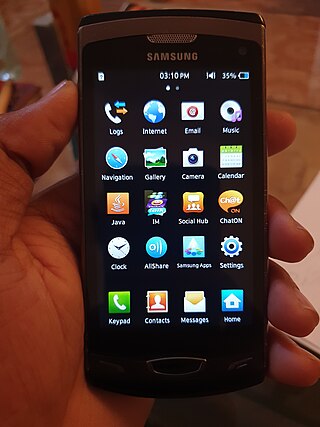
The Samsung Wave II S8530 is the successor of the Samsung Wave S8500 smartphone running the Bada 1.2 operating system designed by Samsung, which was commercially released in October 2010. The Wave is a slim touchscreen phone powered by Samsung's "Hummingbird" CPU, which includes a 1 GHz ARM Cortex-8 CPU and a built-in PowerVR SGX 540 graphics engine, "Super LCD" display and 720p high-definition video capture capabilities.SlashGear speculated that the phone could be the result of a rumored AMOLED panel shortage.
The HTC Evo Shift 4G is a smartphone developed by HTC Corporation and marketed as the concurrent/sequel to Sprint's flagship Android smartphone, running on its 4G WiMAX network. The smartphone launched on January 9, 2011.

Sencha Touch is a user interface (UI) JavaScript library, or web framework, specifically built for the Mobile Web. It can be used by Web developers to develop user interfaces for mobile web applications that look and feel like native applications on supported mobile devices. It is based on web standards such as HTML5, CSS3 and JavaScript. The goal of Sencha Touch is to facilitate quick and easy development of HTML5 based mobile apps which run on Android, iOS, Windows, Tizen and BlackBerry devices, simultaneously allowing a native look and feel to the apps.
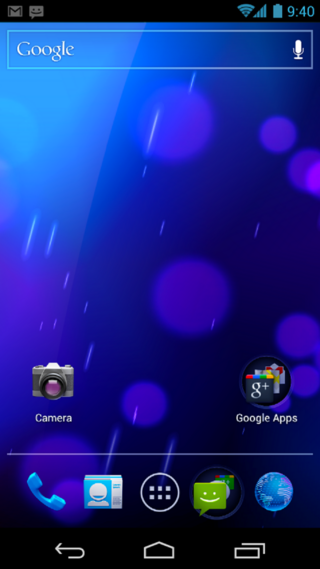
Android Ice Cream Sandwich is the fourth major version of the Android mobile operating system developed by Google. Unveiled on October 19, 2011, Android 4.0 builds upon the significant changes made by the tablet-only release Android Honeycomb, in an effort to create a unified platform for both smartphones and tablets. The first phone with Android Ice Cream Sandwich was Samsung Galaxy Nexus.
Skyfire is a software company founded in 2007, and acquired by Opera Software ASA, now Otello Corporation, in 2013. In 2015, the company became the Network Solutions division of Opera, and ceased using the Skyfire brand name. They offer network optimization technologies including video optimization and monetization tools for carriers. Skyfire discontinued its Skyfire Web Browser in 2014 in order to consolidate its focus on its mobile operator technology. Skyfire was funded by venture capital, and was acquired by Opera Software ASA in March 2013.
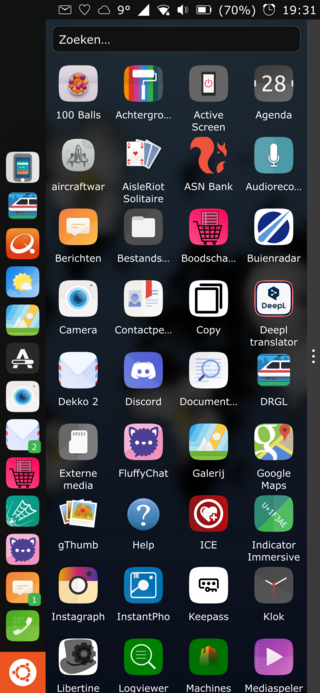
Ubuntu Touch is a mobile version of the Ubuntu operating system, being developed by the UBports community. Its user interface is written in Qt, and is designed primarily for touchscreen mobile devices such as smartphones and tablet computers, but the original goal of convergence was intended to bring Ubuntu Touch to laptops, desktops, IOT devices and TVs for a complete unified user experience.
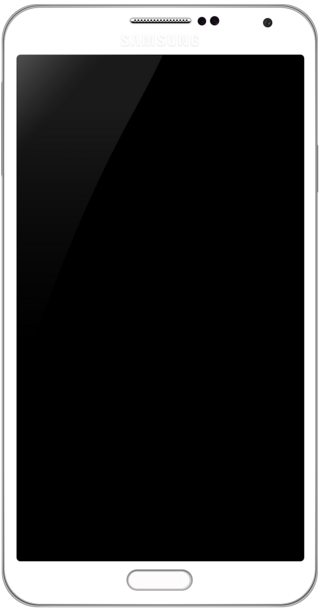
The Samsung Galaxy Note 3 is an Android phablet smartphone produced by Samsung Electronics as part of the Samsung Galaxy Note series. The Galaxy Note 3 was unveiled on September 4, 2013, with its worldwide release beginning later in the month. Serving as a successor to the Galaxy Note II, the Note 3 was designed to have a lighter, more upscale design than previous iterations of the Galaxy Note series, and to expand upon the stylus and multitasking-oriented functionality in its software—which includes a new pie menu opened through the button on the stylus for quick access to pen-enabled apps, along with pop-up apps and expanded multi-window functionality. It additionally features new sensors, a USB 3.0 port, 3 GB of RAM, and its video camera has been upgraded to 2160p (4K) resolution and doubled framerate of 60 at 1080p, placing it among the earliest smartphones to be equipped with any of these.

Messages is an SMS, RCS, and instant messaging application developed by Google for its Android and Wear OS mobile operating systems, while it's also available via the Web. Messages is Google's official universal messaging platform for the Android ecosystem, similar to the implementation of iMessage on Apple devices.
Windows 11 is a major release of the Windows NT operating system and the successor to Windows 10, and it introduces new features such as a redesigned interface, new productivity and social features, and updates to security and accessibility and alongside improvements to performance.










